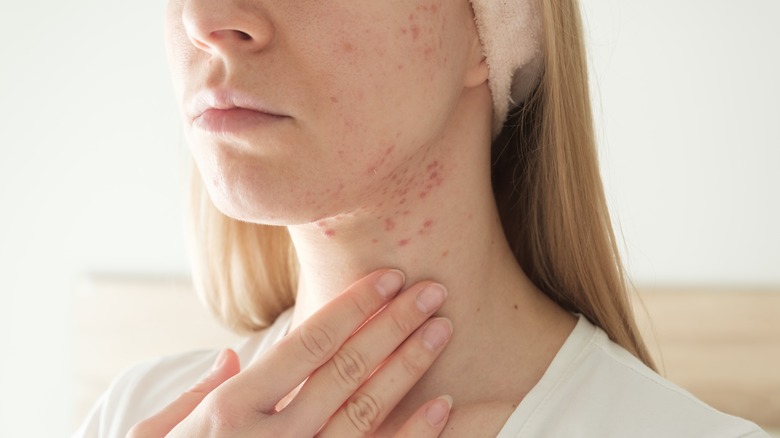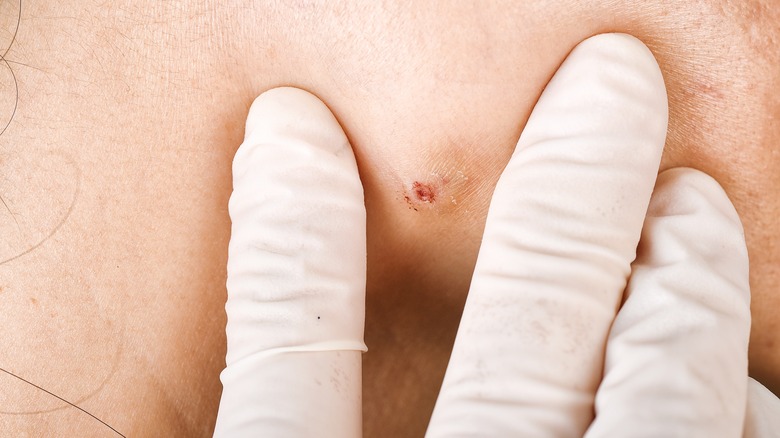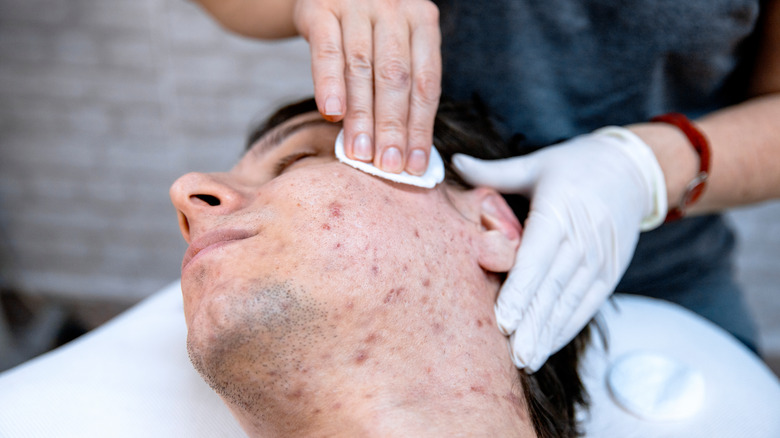Why You Should Think Twice Before Popping Cystic Acne
Having flawless, well-groomed skin is important for many people. So when pimples and blackheads develop, it's tempting to get rid of these troublemakers in the fastest way possible. In many cases, this involves popping them. However, squeezing a pimple caused by cystic acne isn't always a good idea. Healthline states that cystic acne is the most severe form of acne and is closely related to hormone imbalances in the body. WebMD reiterates that although doctors aren't exactly sure what causes cystic acne, the increase in hormones called androgens can result in clogged pores.
What's certain is that blackheads and reddened pimples, which are particularly painful, are usually visible in cystic acne. These superficial symptoms arise when bacteria cause an infection deep inside the skin, per WebMD. The infection causes swelling and inflammation, creating a pus-filled bump that slowly protrudes through the skin. Therefore, the symptoms of cystic acne might include pain, as confirmed by WebMD.
Why you shouldn't pop cystic acne
Popping pimples to get rid of them can quickly backfire in many cases. First, it might result in the infection spreading. Healthline states that pressing and squeezing the affected area can cause bacteria to penetrate deeper into the wound, triggering more inflammation. The pressure or force from the squeezing can also damage the skin barrier (the walls of surrounding tissue), resulting in permanent scarring, per Healthline.
There's also an additional risk of infections due to unclean work. Using dirty fingers to pop a pimple might introduce other infections to the skin. Hands are major sources of bacteria and germs, per the Centers for Disease Control and Prevention.
It's always advisable to leave the pimples alone and have them professionally dealt with by a dermatologist. They usually work under hygienic conditions with sterile instruments that can correctly open pimples (via the American Academy of Dermatology). If you want to reduce the size and swelling of cystic acne, Livestrong advises placing a washcloth with very warm water on the affected area of the skin. This makes it easier to drain out the pimple. You can also apply a spot treatment with 2.5% benzoyl peroxide, which helps keep the area bacteria-free.
Treatment options for cystic acne
According to Healthline, over-the-counter medications aren't strong enough for severe cystic acne. So, it's best to speak to your doctor or dermatologist for more information about the best treatment plan. They might offer a few options, including oral antibiotics, isotretinoin, spironolactone, contraceptives, or a topical retinoid. Chemical peels and laser resurfacing might also help reduce the appearance of scars, per Healthline.
Prevention is also key when fighting cystic acne. Your dermatologist might advise on the best facial cleansing routine tailored to your skin type to prevent new pimples from forming. Healthline also suggests removing all your makeup before going to bed, whilst Cleveland Clinic advises using non-comedogenic (water-based) makeup and keeping your hands away from your face. Diet might also play a vital role in keeping the skin clear and pimple-free. People with a diet high in dairy and sugar might experience more acne flare-ups, per Cleveland Clinic. Lastly, try to identify and eliminate the various causes of stress in your life, as stress is also linked to acne breakouts, per Healthline.



